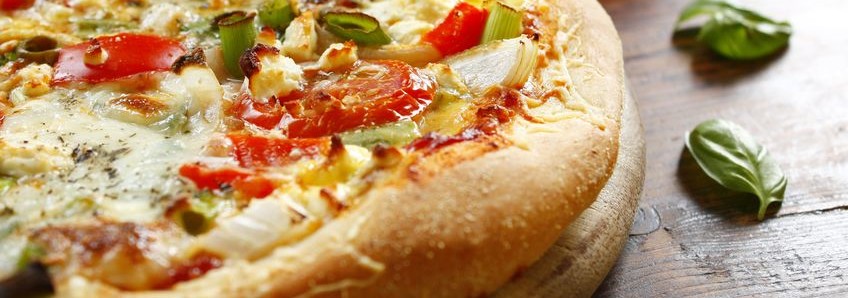
Of all the gluten-free bread products out there, pizza dough is one of the most challenging for bakers. Why? Because a successful pizza dough is all about its extensibility and cohesiveness—both attributes of a strong gluten matrix. Gluten-free flours just don’t offer the same structure-building proteins.
What’s the solution?
Like other successful gluten-free products, it’s all about finding ingredients that can take over for the lack of gluten. Here are a few things you can try with pizza dough:
- Use the benefits of protein building blocks with ingredients like flax, eggs or milk.
- Use a combination of hydrocolloids and emulsifiers to help with dough handling.
- Modified starches and gums increase structure and strength.
- Some gluten-free flours that have undergone high-pressure application or extrusion technology tend to perform better in dough.
- Enzymes improve dough handling, adding elasticity, among other things.
Which enzymes should you use?
Here are five enzymes that work especially well in gluten-free pizza dough:
- Transglutaminase can be used for polymerizing proteins from one or more sources through the formation of intermolecular cross-links. Transglutaminase has successfully improved the rheological and handling properties of oat dough and rice dough.
- Glucose oxidase is a popular oxidizing enzyme used in the food industry. It has been shown to enhance the elastic-like properties of sorghum, corn, and rice flours.
- Amylase can modify gluten-free batter through hydrolysis, oxidation, or a protein cross-linking reaction, resulting in improvement of rheological properties and related product attributes.
- Cyclodextrin glycosyltransferase (CGTase) (EC 2.4.1.19) can modify the pasting properties of different starches by converting starch and related sugars into cyclodextrins (CDs). CDs have the ability to entrap hydrophobic molecules in their internal cavity and act as a “molecular container.” Addition of CGTase to rice flour is known to affect its rheological properties.
- Tyrosinase and laccase are oxidative enzymes capable of catalyzing cross-linking biopolymers via their phenolic moieties. These enzymes can contribute in improving the viscoelastic properties of gluten-free pizza dough by the formation of covalent bonds within or between cereal biopolymers.

